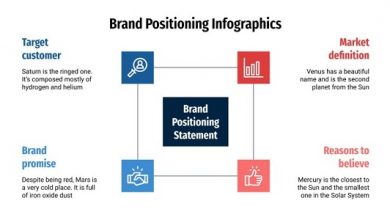What is the pricing strategy types advantages disadvantages examples
Pricing strategy refers to all the various methods or models that companies use to find the most competitive price for their products or services . This strategy is combined with other marketing strategies such as 4P strategies (product, price, point of sale and promotion), economic standards, competition, market demand and product characteristics.
Pricing strategy constitutes one of the most important ingredients in all of marketing as it focuses on generating and increasing an organization’s revenue which will eventually become a profit for the company.
Understanding market conditions and consumers’ unsatisfied desires, along with the price the consumer is willing to pay to satisfy their unsatisfied desires, is the best way to succeed in pricing a product or service.
Don’t forget that a company’s ultimate goal is to maximize profits while competing and remaining in a competitive market.
However, to maximize profits and retain customers, you must choose the right pricing strategy. This will help to achieve the goals as an organization.
Pricing
Deciding how much to charge for a product requires more thought than simply calculating costs and adding a surcharge.
The management of a business needs to price its products and services very effectively as it does not want to get into a situation where sales suffer due to a relatively high price compared to competitors.
The company would also not want to keep the price too low to minimize profits or incur losses.
Therefore, pricing must be done intelligently and effectively, ensuring that the organization’s management considers all aspects before pricing a product.
What is the pricing strategy?
Setting prices for products can be difficult. Setting prices too high will cause valuable sales to be lost. Setting them too low will cause valuable income to be lost.
Fortunately, price doesn’t have to be random. There are dozens of models and pricing strategies that can help you better understand how to set the right prices for your audience and revenue purposes.
Pricing strategies help you choose prices that maximize profits by considering consumer and market demand.
Pricing strategies take into account many business factors such as revenue goals, marketing objectives, target audience, brand positioning and product attributes.
They are also influenced by external factors such as consumer demand, competitive pricing, and general market and economic trends.
Profit versus competition
Entrepreneurs often look at the cost of their product, consider competitors’ pricing, and adjust their own selling price with an additional amount.
While cost and competitors are important, they shouldn’t be at the center of your pricing strategy. The best pricing strategy is the one that maximizes profits.
However, pricing strategy is not always about profit margin. For example, you might choose to set the cost of a product at a low price to maintain market share and prevent competitors from encroaching on territory.
In these cases, you must be willing to sacrifice profit margin to focus on more competitive pricing.
However, care must be taken when performing an action like this. While it can be helpful for the business, it can also bring the company to a standstill.
A good rule of thumb to remember when pricing products is that customers won’t buy the product if the price is too high, but the company won’t be able to cover costs if the price is too low.
Types of pricing strategy
economical price
This involves minimizing marketing and production expenses as much as possible. Due to the lower amount of expenses, a lower price can be set and still make a small profit.
Price based on value
The price is established based on the value that the customer believes to have what is being sold.
It has very little to do with the cost and more to do with how the product is evaluated by the customer.
Occurs when external factors, such as a sharp increase in competitors or an economic downturn, force companies to provide value to customers in order to maintain sales.
Customers don’t care how much it costs to manufacture a product as long as they feel they are getting excellent value when they buy it.
sliding price
A high price is set for the product and then lowered as competing products appear on the market.
It helps companies maximize the sale of new products. In addition to recouping your development costs, it also creates an illusion of quality and uniqueness when the product is first introduced to the market.
penetration price
A low price is first set to enter a competitive market and then raised. He seeks to attract buyers by offering lower prices than competitors on products.
It can be risky as it can result in an initial loss of revenue for the business. However, after entering the market, the price can be increased to generate profits.
premium price
When you have a unique product or brand that no one can compete with. This strategy should only be considered if there is a considerable competitive advantage and it is known that a higher price can be charged without being affected by a product of similar quality.
Since customers must perceive that the product is worth this higher price, it is necessary to work hard to create a perception of value.
psychological price
It refers to the techniques used to encourage customers to buy based on emotional impulses rather than logic.
geographic price
It is considered if the business expands to other state or international lines. This implies establishing a specific price based on where it is sold.
How to make a pricing strategy?
You must start with what is needed. This will help identify the right type of pricing strategy to use.
Simply calculate certain numbers, such as costs and profit target, and figure out what matters most to the business.
Pricing is usually set on a cost-only basis because it’s easier. You can also copy the competition’s price, which is a slightly better strategy.
However, setting the price is an iterative process. Correct prices are unlikely to be established immediately, it may take several tries and a lot of research.
Ideally, consider everything before pricing a product, including the consumer’s ability to pay for the product, market conditions, competitor action, production costs and raw materials.
Price based on value
For products that stand out in the marketplace (crafts or high-tech products), value-based pricing will help better convey the value offered.
steps to follow
– Choose a product that is comparable to the price you want to charge and check what the customer is paying for it.
– Find all attributes in which it differs from the product being compared.
– Assign a monetary value to all these differences, adding all that is positive and subtracting all that is negative, in order to obtain a potential price.
– Make sure the value to the customer is greater than the cost of the product. Otherwise, money will be lost with every product sold.
– Show customers why the price will be acceptable. If there is an established market, the existing price range will help inform customers’ price expectations.
Advantages of pricing strategy
Price based on value
– The price best fits the customer‘s perspective.
– Allows you to be more profitable, which means you can acquire more resources and expand your business.
– When pricing doesn’t work, the answer is not to lower it, but to determine how customer value can be improved. This can mean a better adaptation of the product to the market.
economical price
– It helps companies survive in times of economic instability, as it allows them to set lower prices, attracting customers with financial pressures.
– Selling a similar item at a lower price helps to weaken the competition and thus gain a solid competitive advantage.
penetration price
– It’s the fastest way to capture competitive market share and protect it against new competitors.
– The rapid increase in sales volume allows economies of scale to be achieved in a short period of time.
sliding price
– Allows companies to maximize profits on early customers before dropping the price to attract more price-sensitive consumers.
– It is the best strategy to guarantee coverage of production costs.
premium price
– The product has a premium, which means it has the potential to achieve a high profit margin.
– A premium price can help enhance the brand identity and add to the quality the product aspires to.
Disadvantages of pricing strategy
economical price
Small businesses using cheap pricing may struggle to remain profitable, as they are less likely to achieve the sales volume necessary for this strategy to succeed.
When cost is a pressing issue for customers, their loyalty is not guaranteed. Economy-priced customers will always look for the best deal and won’t be afraid to change suppliers to get it.
This means that it is vulnerable to competitors and that the profit margin can be unstable, varying greatly from month to month.
penetration price
As the price of the product is initially set quite low, profit margins can be affected until the price increases.
If the starting price is too low, it could cause a low-quality brand. This can make it difficult to retain customers after the decision to raise the price, leading to sales falling short of expectations.
It can be difficult to raise the price as this may be met with strong customer resistance.
sliding price
Launching at a high price that then drops can upset early buyers, who paid a premium for the privilege of getting the product first.
This can hurt brand loyalty, especially if the price drops too quickly after launch.
If the price of the product remains high for too long, customers may start to lose interest. This could jeopardize future growth potential.
premium price
– Difficult to start and maintain. Brand cost will likely be high while sales volume will be low.
– The high price of the product means that competitors will lower their price.
The risk associated with over- or under-producing a premium product can be important:
– Insufficient production will not be able to satisfy demand.
– With overproduction, there is a risk that production costs will destroy profits.
Examples of pricing strategy
economical price
It is used by generic food suppliers and discount retailers. While it’s incredibly useful for big companies like Walmart and Target, the technique can be dangerous for small businesses.
premium prices
It is seen in the luxury car industry. Companies like Tesla can command higher prices because they are offering products, like self-driving cars, that are more unique than anything else on the market.
sliding price
An example of this strategy is seen with the introduction of new technologies, such as an 8K television, when currently there are only 4K and HDTV televisions on the market.
psychological price
Pricing a watch at $199 has been shown to attract more consumers than $200, although the actual difference is quite small.
One explanation for this is that consumers tend to pay more attention to the first number in a price than the last.
geographic price
The Sport store sells high-performance sportswear. For winter clothing, a higher price may be charged at retail stores located in a cold climate than at stores located in a warm climate.
Price based on value
A company might produce a line of high-end dresses that sell for $1,000. On the other hand, it manufactures umbrellas that sell for $100.
It can cost more to make umbrellas than dresses. However, dresses are priced higher because customers feel they are getting much better value. No one would likely pay $1,000 for an umbrella.




